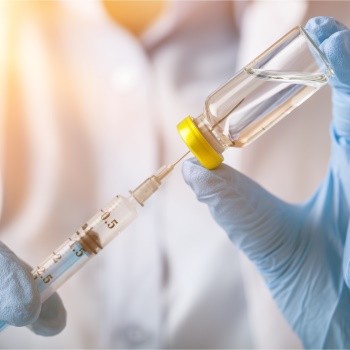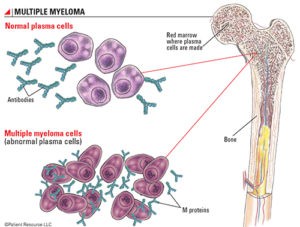
Recently Diagnosed or Relapsed? Stop Looking For a Miracle Cure, and Use Evidence-Based Therapies To Enhance Your Treatment and Prolong Your Remission
Multiple Myeloma an incurable disease, but I have spent the last 25 years in remission using a blend of conventional oncology and evidence-based nutrition, supplementation, and lifestyle therapies from peer-reviewed studies that your oncologist probably hasn't told you about.
Click the orange button to the right to learn more about what you can start doing today.
- You are here:
- Home »
- Blog »
- Multiple Myeloma »
- Stem Cell Transplant Increased Multiple Myeloma Survival?
Stem Cell Transplant Increased Multiple Myeloma Survival?

The top article linked and excerpted below documents how improvements in the aggressive, high-dose therapy- an autologous stem cell transplant (ASCT)- has improved overall survival for newly diagnosed multiple myeloma (NDMM) patients.
Or does it?
The four studies linked and excerpted below document four important issues that NDMM patients must wrap their brains around before they begin any toxic therapy.
- Study #1– increases in overall survival over the past 20 years have resulted in the invention of “novel therapies” such as Revlimid (lenalidomide), Velcade (Bortezomib) and Darzelex (Daratumumab) not an ASCT-
- Study #2– NDMM patients can never really understand how a clinical trial may affect them. Why? Because oncologists who manage clinical trials, all clinical trials, often exclude many of the sickest NDMM patients from the study warping the results of the study.
- Study #3– The youngest, healthiest NDMM patients can live a long time after their diagnosis of MM. But if you are older, are stage 2 or 3, have co-morbidities such as liver disease, your average OS will be considerably shorter.
- Study #4– if you are one of the young, healthy long-term MM survivors that study #3 cites, you will probably develop one or more of the long-term or late stage side effects that study #4 documents.
The only thing that the studies below illustrate is that aggressive, high-dose therapies resulting from an ASCT result in toxicity and short, long-term and late stage side effects.
As I’ve said over and over again, NDMM patients must manage toxicity carefully throughout their survival. The human body can heal from the damage done by toxic chemotherapy but evidence-based, non-toxic, non-conventional nutrition, supplementation and lifestyle therapies must mix with low-dose toxic chemo if the patient is to balance quality with quantity of life.
Regularly being tested in an effort to keep an eye on your incurable blood cancer.
To learn more about evidence-based, non-toxic MM therapies, scroll down the page, post a question or comment and I will reply to you ASAP.
Thanks and hang in there,
David Emerson
- MM Survivor
- MM Cancer Coach
- Director PeopleBeatingCancer
Recommended Reading:
- Multiple Myeloma Chemotherapy, Allergy, Hypersensitivity, Side Effects?
- Multiple Myeloma Chemotherapy = Accelerated Aging
- Stem Cell Transplant- Treatment-related Secondary Cancer
Improved survival in multiple Myeloma patients undergoing autologous stem cell transplantation is entirely in the standard cytogenetic risk groups
“Novel drugs and drug combinations have improved outcomes for multiple myeloma patients. However, subgroups of patients still have a poor progression‐free survival (PFS) and overall survival (OS)…
Conclusion- Our results show that the dramatic improvement in outcome for MM patients during the last 20 years only applies for standard‐risk patients, while high‐risk MM patients still are doing poorly, indicating that the novel drugs developed during this time are preferentially effective in standard‐risk patients.
New treatment modalities like CAR‐T cells, CAR‐NK cells, and/or bispecific antibodies should be tried in clinical studies early in the course of the disease, especially in patients with high‐risk cytogenetics.
Multiple Myeloma Patients Ineligible for Randomized Controlled Trials Have Poorer Outcomes Irrespective of Treatment
“In their study, Shah et al analyzed a prospective observational cohort study of patients with newly diagnosed multiple myeloma (MM) and determined that 40% would have been considered ineligible for most randomized controlled trials (RCTs) based on standard eligibility criteria.
These patients had a lower 3-year overall survival rate compared to the RCT-eligible patients (63% vs. 70%). This study raised important observations regarding the external validity of RCTs in the myeloma population…”
Functional Cure, Defined As PFS of More Than 7 Years, Is Achieved in 9% of Myeloma Patients in the Era of Conventional Chemotherapy and of First-Generation Novel Anti-Myeloma Agents; A Single-Center Experience over 20-Year Period
“Between January 1994 and December 2010, 406 consecutive newly diagnosed MM patients received first line therapy in the Department of Clinical Therapeutics (Athens, Greece).
All patients had symptomatic disease, based on the IMWG criteria of that period (at least one CRAB symptom to start anti-myeloma therapy). Thirty-six (8.8%; 23M/13F) patients achieved a PFS of at least 7 years (long PFS group) after frontline treatment.
The median PFS of these 36 patients is 10 years, while the other patients had a median PFS of 22 months…
In conclusion, our study in an unselected group of patients, the majority of whom did not participate in clinical trials, showed that 9% of patients with newly diagnosed myeloma experience prolonged PFS of more than 7 years (median: 10 years) even in the era of CC or first-generation novel agents.
These patients have:
- low risk disease,
- mainly of ISS-1 or -2,
- no high-risk cytogenetics,
- no or mild renal impairment,
- and achieve deep responses after ASCT
Long-term health impacts of hematopoietic stem cell transplantation inform recommendations for follow-up
“However, hematopoietic stem cell transplantation (HSCT) survivors are at risk of developing long-term complications, such as
- endocrinopathies,
- musculoskeletal disorders,
- cardiopulmonary compromise and
- subsequent malignancies.
These complications have a direct impact on the morbidity and mortality experienced by HSCT survivors. Two-thirds of HSCT survivors develop at least one chronic health condition; while a fifth develop severe or life-threatening conditions. HSCT patients who have survived for at least 5 years post-transplantation are at a fourfold to ninefold increased risk of late mortality for as long as 30 years from HSCT, producing an estimated 30% lower life expectancy compared with the general population…


